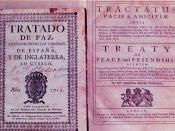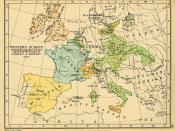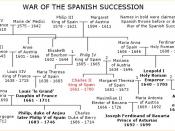Over the course of history, an untold number of treaties and pacts have been agreed upon between individuals, groups and nations alike to settle disputes of every sort; but few have come close to the historic magnitude as that of the Treaty of Utrecht. This series of peace treaties between France, Great Britain, Denmark, and Austria (as well as a host of other, more minor players) marked the end of a thirteen-year struggle that had ravaged continental Europe, the War of the Spanish Succession (also referred to as Queen Anne's War). From the outset of this conflict, there existed two motivating factors that led to the outbreak of war, and also served as the legacy of the peace treaty that concluded it. The balance of power among the European nations, and commercial/ economic considerations - ranging from colonial possessions to trade routes and tariffs - both of which are specifically mentioned in the wording of the treaty itself.
With the impending death of the last Spanish Habsburg king, Charles II, the future of the Spanish succession was to have implications all over Europe. On his deathbed, Charles selected the grandson of Louis XIV as his heir to the throne, believing he was most capable to maintain his kingdom intact. Holy Roman Emperor Leopold I was determined to fight for his house's right to the throne, and was supported by England and Denmark, among others, who sought to keep France's expansion in check, fearing both French hegemony on the continent and further motivated by various commercial interests (namely shipping & trading, and the slave trade). The product of this much-prolonged conflict of interest was the Treaty of Utrecht, including peace agreements between the nations involved, rules determining ownership of various territories, and contracts regarding commerce and business dealings. By...



Good essay
Very helpful, thanks!!
0 out of 0 people found this comment useful.